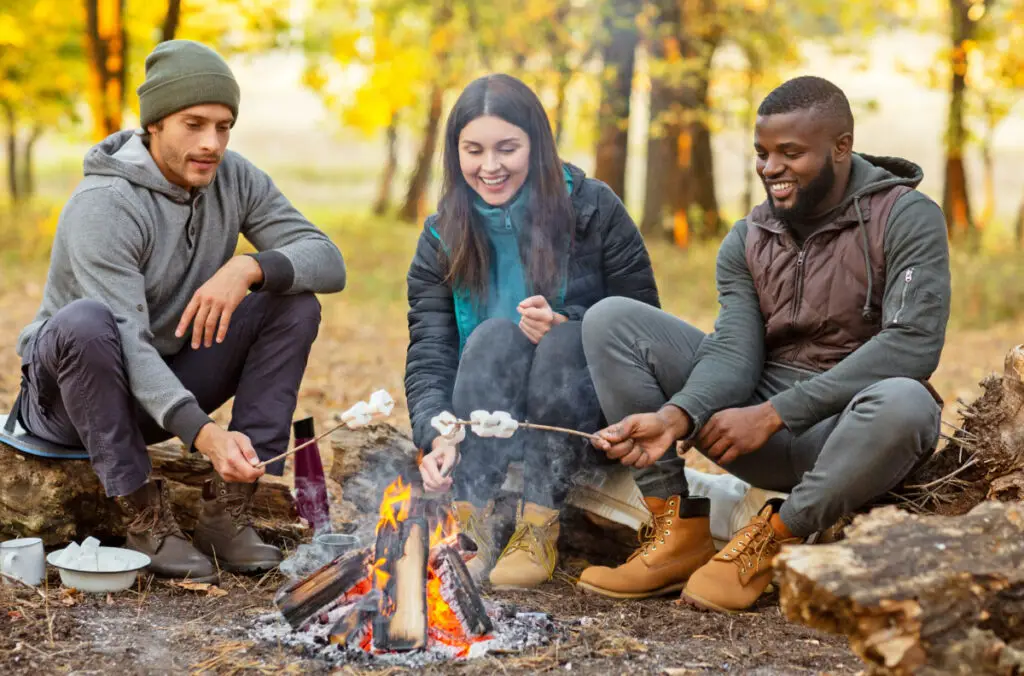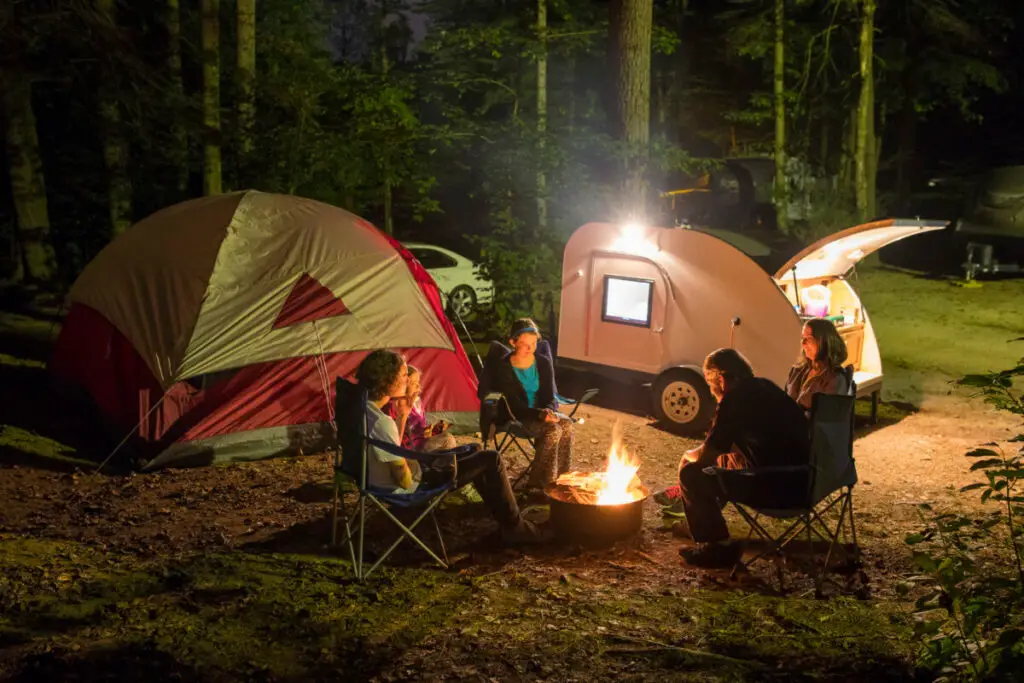
Anyone who has gone camping knows that campfires have a very distinct popping and crackling sound. As you have sat and warmed yourself by a fire or roasted a marshmallow, have you ever wondered why campfires make this sound?
Campfires pop and crackle because moisture trapped in pockets within the wood turns into steam, which will crack the wood to escape these pockets. The amount of crackling and popping depends on the amount of liquid that is in the wood. Using wood that has less moisture can minimize popping.
Not only is there an interesting reason behind why campfires pop and crackle, but there are ways that you can build a fire to prevent campfires from making these sounds at all.
Why Do These Noises Happen?
When you light a fire, you are starting a chemical reaction. This chemical reaction, known as combustion, causes the firewood to be converted into heat. The cellulose within wood reacts with the oxygen in the air. The cellulose begins to decompose at 300°F, though it isn’t until 500°F that the wood will start to burn.
Even when a piece of wood looks completely dry, it usually has little pockets of moisture trapped inside small holes, or it becomes caught in the decomposing cellulose. This moisture is typically water or sap. As the water is subject to the heat of the fire, it will evaporate, turning into steam. This steam will still be trapped in the wood, and as the heat increases, so will the pressure. Eventually, the pressure will become too much, and the wood will crack open to release the steam. This cracking is what causes the classic popping and crackling sounds.
Firewood that has more moisture will have a lot more pockets of trapped water, which in turn means that there will be more pockets of trapped steam that will burst. Wood that has more moisture will be more likely to pop and crackle.
How Can These Noises Be Prevented?

Many people find the popping and crackling of a campfire comforting. Some will even play those sounds on a device to relax or even fall asleep. However, not everyone likes those sounds; some people may want to eliminate them. Firewood that is frequently cracking to release steam will also be sending off a lot of sparks, which can become dangerous. They can jump out of the fire and ignite the surroundings, or they can land on people who are sitting near the fire. Even if you don’t mind the crackling and popping, it is a good idea for you to know how to minimize it.
Keep Your Firewood Dry
Wet firewood is going to pop and crackle more because there are more pockets of trapped liquid. Try to avoid building a fire with wet firewood. Keep your firewood somewhere that it won’t get wet; keep it covered and store it off the ground. If damp firewood is your only option, try to dry it out before you build the fire. Using dry firewood is a good idea for building a campfire even if you don’t care about minimizing the popping and crackling. Building a fire with wet firewood is going to take a lot longer, it will be much more frustrating, and it will release a lot more smoke.
Use Older Wood
Some firewood is fresh from the tree, and some of it has been dead for a while. The wood that has only recently been cut is called greenwood. This wood hasn’t had time to dry out and decompose, so it will have a lot of moisture and sap. If you purchase firewood, make sure to buy wood that has aged at least six months. This gives the wood time to dry out. If you are finding your own firewood while you’re camping, look for trees and branches that have fallen instead of taking wood directly from a tree. Either way, using older wood will decrease the crackling and popping, and the fire will be easier to start.
Use Hardwood
Some types of wood are harder or softer than others. Hardwood and softwood have different contents, and the contents of hardwood make it easier to burn and less likely to crackle and pop. Softwood has more moisture than hardwood, so it will produce more pockets of steam. Softwood also has more resin and tar, which can seal cracks in the wood. This makes it harder for the steam to escape, so there will be more crackling and popping.
Hardwood comes from deciduous trees, which are the ones with leaves that change colors and die in the autumn; trees like oaks, teaks, and sapeles are made of hardwood.
Softwood comes from conifer trees, which have needles and remain green year-round, like evergreen trees such as pines, spruces, and firs.
Build the Fire Correctly
Building a fire does not just mean piling up some logs and lighting them on fire. There are a few different ways to build a fire, which essentially come down to how you arrange the logs in the fire. If you want to minimize the popping and crackling, a tepee or cone fire is a good choice. This type of fire is designed to let a lot of oxygen into the fire. It has a good amount of circulation between the logs. The logs are not touching one another as much as those in other types of fire are. This means that moisture is less likely to be trapped between two logs and will have plenty of space to escape.
The downside to a tepee or cone fire is that the wood burns quickly, so they are mostly meant to be used for quickly warming up or small amounts of cooking. If you want the fire to be burning for a long time, you may want to consider using a different style.
It’s difficult to completely eliminate popping and crackling, as completely eliminating moisture in wood is impossible. However, taking these steps before building a fire can help you minimize it as much as possible.

